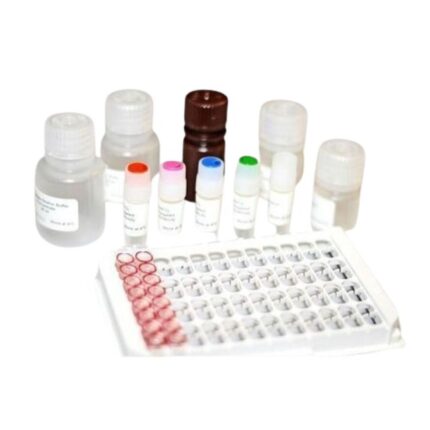-8%
Troponin I Reagent – Jaj International
22,000.00৳ Original price was: 22,000.00৳ .20,300.00৳ Current price is: 20,300.00৳ .
Brand: JAJ
Origin: USA
Packaging Size: Bottle
Number of Tests: 96
প্রোডাক্টি কেনার আগে আমাদের সাথে যোগাযোগ করে প্রোডাক্টির বর্তমান দাম সম্পর্কে জেনে নিবে
| Weight |
2 kg |
|---|
0
People watching this product now!
Description
Cardiac troponin I (cTnI) is a cardiac-specific biomarker that is released during myocardial necrosis; it reaches a peak value in blood after about 11 h. Compared to myoglobin and creatine-kinase-MB, cTnI is more sensitive and specific to acute myocardial infarction (AMI). As such, it has been recommended as a fundamental cardiac marker for the diagnosis of AMI. Therefore, developing a convenient assay for cTnI detection, in line with rapid and accurate early detection requirements, is very useful for heart-disease prevention.
To date, various analysis techniques have been developed for cardiac troponin detection, including the use of chemiluminescent immunoassays, enzyme-linked immunosorbent assays, electrical detections, and the use of aptamer-based biosensors. In order to improve detection sensitivity and the limit of detection (LOD), researchers were mainly focused on new strategies such as pulse laser technology, upconversion rare-earth probes, and surface plasmon resonance (SPR) technology.
Although those techniques are expected to pave the way for improved specificity and sensitivity, the demand for extremely expensive devices and cumbersome operation both greatly limit their feasibility. Point-of-care tests (POCT) based on enzyme-linked immunosorbent assays (ELISA), fluorescence, and chemiluminescent have been developed for use in the rapid detection of AMI. Lateral flow immunoassay (LFIA) based test strip is one of the key technologies in the POCT, due to its simplicity, rapidity, and ease of use.
During the detection process of LFIA, in contrast to foodborne pathogens and environmental pollutants, cTnI is affected by the autofluorescence of interfering factors from blood samples, resulting in low analytical sensitivity and false positive results. Therefore, a series of good-performance probes have been developed to improve the sensitivity, including quantum dots, carbon dots, up-conversion rare-earth materials, and organic dyes such as fluorescein isothiocyanate (FITC) and Ruby. Some of the probes display the high sensitivity and specificity required for the immunoassay. However, their low stability and reproducibility are still bottlenecks to their practical application.
For the immunoassay test strip technique, it is important to improve the sensitivity and LOD for the detection target and to maintain excellent stability and repeatability of the assay to meet the requirements of practical and commercial applications. The organic dye molecules are usually exposed to severe environmental conditions during use and storage and often suffer from photobleaching and quenching due to the influences of solvent molecules and reactive species, such as oxygen or oxidative ions in the solution.
Accordingly, the design of dye-doped nanoparticles, instead of dye molecules, for diagnosis has received more attention in recent years. Compared to dye molecules, dye-labeling nanoparticles exhibit significantly enhanced brightness and stability and could improve reproducibility in practical use.
Generally, polymers as common materials have obvious advantages in the preparation of nanoparticles, in controlling functional groups and structure. However, in order to conjugate the antibody proteins, the synthesis usually requires at least two steps, including the establishment of the principal part and the modification of the nanoparticles’ surface.
In previous studies, a core-shell microsphere was synthesized using polystyrene as the core at first; the shell was then built using acrylamide as a template to capture adenosine, which was used as a bridge for conjugating antibody protein. Protein immobilization onto the microspheres can also be carried out through physical adsorption and electrostatic interactions, which was based on controlling of the surface charges by changing the percentage of styrene and covering the surface of the microspheres with bacterial outer membrane to increase the affinity of antibodies. In addition, inorganic and metal materials were also considered as alternative choices due to their stable morphologies and special properties.
Among them, silica microspheres were usually used as a carrier with functionalized surface modification, such as nano-gold and graphene oxide, for enhancing the signal. Fe3O4 and Co3O4 were also frequently applied to impart the functionality of magnetic enrichment and high catalytic activity.
In order to conjugate the antibodies for immunoassay, some functional groups, such as carboxyl and amidogen, still need to be modified on those microsphere surfaces. Although these methods are effective in improving the detection sensitivity and product stability, many problems are still encountered, such as complicated synthetic steps, low yield, and high cost, which limit their application in clinical detection.
In this study, a facile one-step synthesis was used to prepare a single microsphere with clear core-shell structures to establish a new POCT method for the rapid and early detection of cTnI. This detection method, based on a double-layered fluorescent microsphere in combination with an immunochromatography technique, was more challenging than previous works since it needed to have accurate test results as well as rapidity and convenience in practical application.
The microsphere was produced using relatively inexpensive compounds (styrene and acrylic acid) to improve the stability of the red fluorescent dye Nile-red (NR), which could reduce the background noise interference signal. Furthermore, this assay can be used in the straightforward analysis of the plasma samples without washing steps, thereby reducing the operating procedures for non-professionals and improving detection efficiency. Our results indicate that this assay could be used for the early detection of cTnI in the future.
Reviews (0)
Only logged in customers who have purchased this product may leave a review.











Reviews
There are no reviews yet.